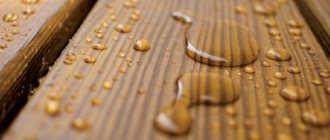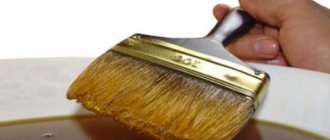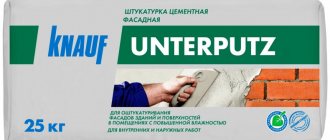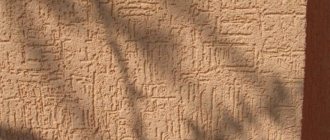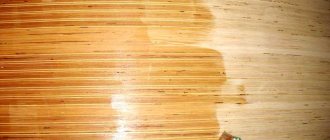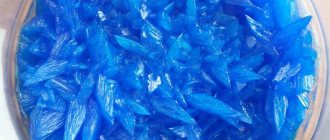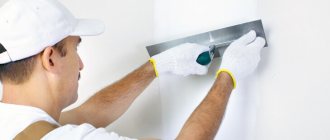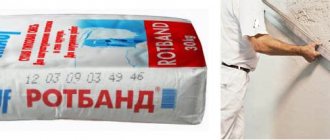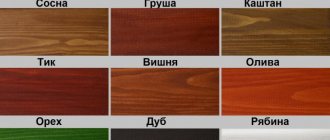Construction and finishing materials, furniture made from different types of wood are valued at any time. Wooden structures retain heat well, have natural beauty and are environmentally friendly, and provide protection from noise. But many of the advantages of wood are downplayed by a major drawback - weak resistance to negative environmental influences. The tree is affected by insects, moisture, fire and other external factors.
To protect wooden products from various types of destruction, special protective compounds are used. Each protective product is designed taking into account the place of application and purpose. The structure of the material acquires properties that can extend its service life many times over. Depending on the composition of the product, the surface of the material either acquires a protective film, or the wood structure is completely impregnated. The article will consider: the best impregnation for wood in 2022; types of protective equipment; appointment; advantages and disadvantages.
What is wood impregnation used for?
When faced with a processing question, the first thing a consumer thinks about is the purpose of the activity.
It should be understood that wood is an organic material that tends to wear out and be exposed to various harmful factors.
Considering in detail these factors can be divided into:
- Humidity.
- Sudden temperature changes.
- The presence of beetles and fungal formations.
- Harmful effects of open fires.
To prevent wear and destruction, preparatory measures are carried out, among which the main place is occupied by wood impregnation.
You can give a list of the main phenomena from which such treatment will protect:
- Changes in material colors, fading.
- The presence of insects that feed on woody elements.
- Darkening due to dust and dirt exposure.
- Soaking and rotting.
- The formation of cracks, which is caused by temperature changes, as well as from frequent precipitation.
- Destruction of wood due to exposure to ultraviolet radiation (sun rays).
Considering such a list, we can say that the range of protective properties of impregnation is quite large, but this is not a complete list of all functions, since there are many types of this treatment and each of them has its own properties and functions.
What types of wood impregnation exist?
Before purchasing, you need to study all the varieties that were created by the manufacturers. Considering the fact that impregnation today is one of the important stages in the protection of wood materials, it can be noted that there are quite a few types of such treatment. Studying each type in more detail, we can distinguish:
- Impregnation in the form of a water repellent. From the name you can understand that protection occurs precisely from moisture and water entering the material, as a result of which rotting can begin. The impregnation itself is applied in a layer to the object, which forms protective water-repellent layers that do not allow moisture to be absorbed into the wood.
- Antiseptic impregnation. Everyone knows that antiseptics are designed to protect against bacteria and other organisms. In this case, antiseptic impregnation is aimed at combating fungi, mold, bacteria and insects. The antiseptic has the property of penetrating the material, which allows it to protect the wood over its entire area.
- Impregnation in the form of a fire retardant. This treatment is aimed at fire protection so that the wood does not burn or melt. In this case, there are several subtypes: using saline solutions and using paste-like compositions or specially designed varnishes. It is worth understanding that you should not save on such impregnation; you need to purchase a material that has high penetrating properties.
- Sun protection impregnation. The name speaks for itself; the purpose of these impregnations is to protect against ultraviolet rays, which can cause destruction of wood. This treatment is done once every two to three years.
In general, you can see that manufacturers have not skimped on the development of protective impregnations for wood.
Varieties
Fire protection products available on the construction market differ in characteristics, composition and application features. Initially, goods in this category are conditionally divided into two groups:
- Impregnations. Active substances penetrate deep into the fibers without changing the texture and appearance of the wood.
- Coatings. The composition is applied superficially, negatively affects the texture, and often has a pronounced chemical odor.
Solutions of the second category are used for utility buildings or residential buildings where additional surface finishing is required.
Products also differ in chemical formula:
- Saline. A budget option. It has a relatively short service life - no more than 3 years. Characterized by high consumption and low penetration depth. Easily washed out with water, suitable only for interior work.
- Not salty. The “old-timer” of this market segment has been used since the mid-80s of the last century, and has not lost its relevance today. The composition includes organophosphorus components that are highly resistant to high temperatures.
Such impregnations do not spoil the appearance of wood and can last up to 15 years, but their cost is significantly higher than that of salt analogues
What materials is it made from?
Another important parameter is the base material from which the impregnation was made. Studying this issue, we can distinguish impregnations:
- Water based. These models are universal and deeply penetrating. The disadvantage of such impregnations is that they wash out quickly.
- On acrylic bases. This treatment is aimed at protecting against rot, mold and destruction. The disadvantage is low frost resistance.
- Salt based. Such impregnations are produced in the form of antiseptics and fire retardants. Using this treatment will help protect the wood from fires and fungus formation. The downside is that it washes out quickly and can damage metal elements.
- Alkyd based. This treatment is very effective because it has the ability to create thick protective layers.
- Oil based. The most environmentally friendly treatment. A rather big disadvantage is the fire hazard of such material.
- Solvent based. It is considered the most effective in treating external wooden elements. All this is due to the fact that such impregnations are very wear-resistant and do not require repeated processing.
It is also worth noting that such material is quite toxic and can harm human health.
BECKERS
The company comes from Sweden and positions itself as a manufacturer that produces the most environmentally friendly paints in Europe. This is not surprising, because the country where the company was founded is very attentive to the cleanliness of the environment. The manufacturer is constantly searching and creating new and better products. Since BECKERS paints and paint and varnish products in general are used in human homes and directly near human habitations, great importance is attached to the characteristics of the coloring compositions with which surfaces are coated.
A striking example is BECKERS Perfekt Akrylatfarg paint for external painting of not only wooden bases, but also surfaces made of metal, concrete, brick, and plasterboard. This composition fits perfectly on previously painted surfaces, without cracking or losing its properties. Thanks to its pure base, the paint has absolutely no harmful effect on the environment. You can safely paint the playground and not worry about the harmful effects of chemical compounds on children.
- Country of origin: Sweden
- Manufacturer's website - https://www.beckers-design.ru
What parameters to pay attention to when choosing impregnation
Having decided to purchase impregnation, you need to understand what criteria the choice is based on.
The main parameters are:
- Environmentally friendly and harmless to humans.
- Purpose.
- Impregnation composition.
- Price.
- Economical.
- Fire safety.
- Impregnation functions.
When choosing impregnation, do not forget about these criteria in order to select the highest quality material.
What it is
The compositions are deep penetration impregnations that prevent the ignition of wood and the spread of open fire.
It is necessary to apply fire and bioprotection at the initial stages of construction, and not only walls, floors and ceilings are subject to treatment. All elements and auxiliary structures made of wood are impregnated with the composition.
Antipyrines work according to the following scheme:
- under the influence of temperatures, active substances melt, blocking the access of oxygen to the material;
- a fire-resistant film is formed, significantly increasing the ignition temperature of wood;
- The organophosphorus compounds included in the composition cause swelling of the protective film, which eliminates direct contact between the fire and the base.
Most products contain antiseptics that prevent the appearance of pathogenic microflora. Therefore, the building is under double protection.
The best manufacturers of wood impregnation
It should be said that the market offers a wide selection of brands that produce impregnation.
In order not to get confused, study the list of the best manufacturers, including:
- Slovenian manufacturer Belinka.
- Russian manufacturer Neomid.
- Finnish manufacturer Tikkurila.
- Estonian manufacturer Pinotex.
- German manufacturer Dufa.
- Serbian manufacturer Veres.

